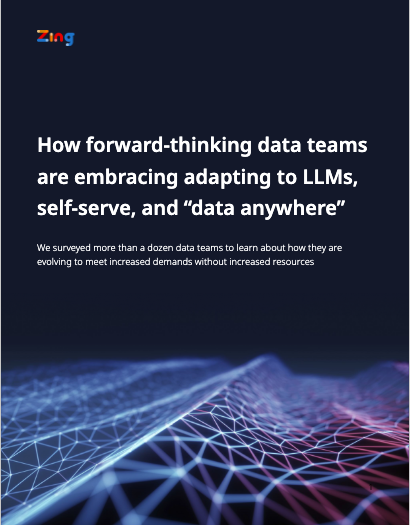
Organizations rely on data to identify trends, uncover patterns, and gain valuable insights into their operations, customers, and markets. Data is a valuable asset to gain insights, make informed choices, and drive business success.
However, one crucial challenge frequently encountered by employees is the lack of confidence in the underlying data they work with. This issue poses a significant obstacle to the effective utilization of data, as it erodes trust in the accuracy, reliability, and relevance of the information upon which decisions are based. To address this concern, it is essential to understand the various factors that contribute to this problem and explore potential solutions to enhance data confidence within organizations.
Within organizations, it is common to encounter a lack of a single source of truth for specific metrics. Different teams or departments may develop their own interpretations and definitions of metrics. Factors such as decentralized data ownership, siloed departmental structures, and varying perspectives on metric importance contribute to the divergence in interpretations. This discrepancy not only hampers effective communication but also undermines employees’ confidence in the data presented.
When there is no unified source of truth for metrics, it creates a fertile ground for confusion and misinterpretation. Employees from different departments may produce divergent reports, leading to disagreements and difficulties in aligning organizational goals. Inconsistent metric definitions can also result in data discrepancies, making it arduous for decision-makers to rely on the data for strategic insights and informed decision-making.
Furthermore, within companies, there is often a lack of comprehensive data cataloging, resulting in data consumers having limited understanding of the true meaning and representation of certain fields. This lack of clarity can have detrimental effects, as it may lead individuals to develop inaccurate insights and, consequently, make ill-informed business decisions. Consequently, this undermines their confidence in the accuracy and relevance of the information they rely on, exacerbating the challenges associated with data-driven decision-making.
The issue is further compounded by the presence of incomplete or unclean data. When data contains inaccurate or missing values, inconsistent formatting, or other quality issues, it introduces doubts regarding the reliability and integrity of the dataset. As a result, employees become cautious about drawing conclusions or making decisions based on incomplete or erroneous information. The lack of confidence in the data quality hampers their ability to fully leverage the potential of data-driven decision-making and can hinder organizational progress.

Implementing a metrics and semantics layer prior to conducting analytics tasks can establish a cohesive and dependable foundation for metrics. This layer serves as a centralized storage system that documents and establishes definitions for essential metrics, their calculations, and their origins. By providing employees with access to consistent and reliable definitions, it reduces ambiguity and enhances confidence in the data. Notable tools that facilitate this include Alation’s data catalog and the dbt Semantic Layer, which offer practical solutions for achieving a unified source of truth for metrics.
Challenges in implementing a semantic layer, include:
1. Aligning on definitions across teams. For new metrics which are still being iterated on, it may be premature to ‘formalize’ a definition across teams.
2. Not all tools support the semantic layer, and often there is replication of logic in semantic layer, python/R data science notebooks, and BI tools.
3. Often a data engineer is required to set this up.
4. It isn’t really appropriate for quick one-off analysis with evolving definitions or analysis that might not be relevant for other users.
Fostering a sense of community within the organization can also play a pivotal role in establishing a reliable source of truth. Employees can utilize this network to exchange inquiries regarding particular metrics or data components, as well as to share valuable insights, best practices, and self-created dashboards.
Through collaboration and active participation with their peers and colleagues, employees can collectively cultivate a shared consensus and comprehension of the data, allowing them to enhance their analytical capabilities. This collaborative process facilitates the identification of discrepancies, clarifies interpretations, and cultivates trust in the accuracy and integrity of the data.

Zing Data can help you bring data to all in your company. If the pointers in this article resonated with you and/or your company, Schedule a demo with us to find out how we can tackle your problems.
Check out our whitepaper, which contains insights from our interviews with over a dozen data teams at Fortune 500 companies and fast-growing start-ups. We cover other challenges that these teams are tackling, and the opportunities that they have set their sights on.
Available on iOS, Android, and the web
Learn how Zing can help you and your organization collaborate with data
Schedule Demo